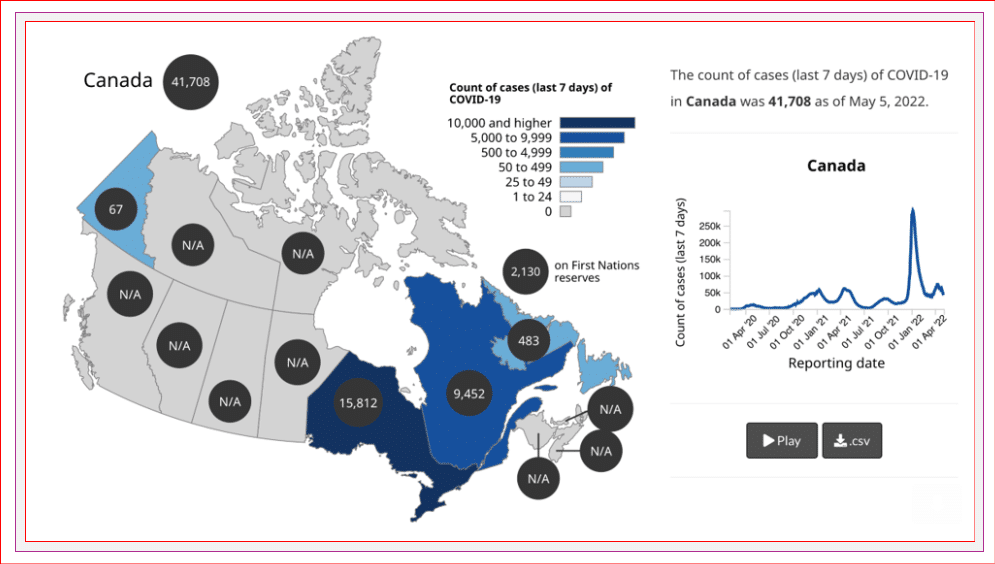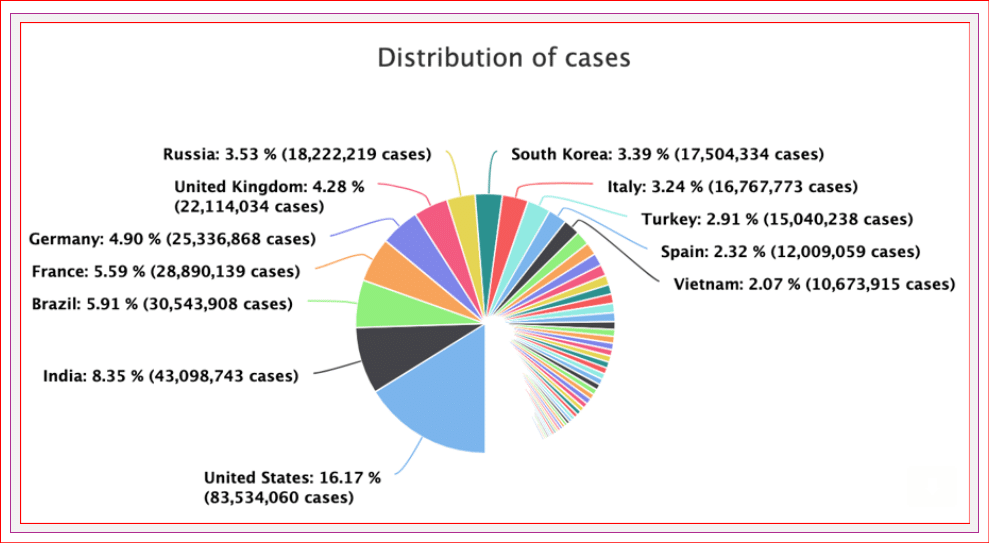Hello friends!
I hope you enjoyed the sunny Mother’s Day weekend!
Let’s dive into our 81st weekly update.
Gosh, I wish this pandemic didn’t provide so much to talk about each week!
All previous issues of this newsletter, going back all the way to week 1, can be found here.
Luckily, hospitalizations are starting to plateau across most of Canada. One exception is Alberta, where hospitalizations continue to rise and the positivity rate is around 25%! Saskatchewan saw a 40% rise in ICU admissions in the last two weeks and a 9% increase in non-ICU admissions.

Hospitalizations in Ontario are stable, at around 1700 admissions. However, the head of the Ontario Science Table, Dr. Peter Juni, thinks there are approximately 90,000 new infections per day based on wastewater data.
Quebec is seeing a plateau, with lower rates of hospitalization in recent weeks. All adults are eligible for a fourth COVID vaccine dose in Quebec now. They are ending their mask mandate on May 14, though masks will still be mandatory on public transport and healthcare facilities.
According to the Pan American Health Organization (PAHO), cases in North America continue to rise. This is the fifth consecutive week of increasing cases, rising almost 20%. The rise is driven by a 27% rise in the United States and, Central America where cases increased by 54% last week.

Cases are rising in almost all U.S. states. Hospitalizations rose by 10% from last week. The CDC says the Omicron BA.2 subvariant was the cause of 62% of all COVID-19 cases last week, down from 70% the prior week, while the BA.2.12.1 strain is accounting for a growing percentage of cases, reaching 37% last week.
The situation in Shanghai, China, remains dire. 8.2 million people are still in lockdown due to ongoing COVID spikes. New hospitals are being constructed to care for what is likely to be a considerable rise in admissions. Sixty subway stations were closed, representing 10% of the subway system, to prevent further spread.
How many people have died due to COVID-19?
Last week the World Health Organization reported that approximately 15 million people died due to COVID infection while the official death toll is 6 million. The WHO numbers are based on data submitted by many countries and statistical modelling. The majority of deaths were recorded in Southeast Asia, the Americas and Europe.


It is essential to understand this impact to learn how to best approach current and future pandemics. For example, South Korea invested heavily in public health policies after MERS and faired far better than many other countries during this pandemic. If we learn from our mistakes, we can do better next time.
Most asked questions this week
Is there any news about the Moderna vaccine for kids under 6?
As we reviewed last week, Health Canada is currently reviewing the Moderna COVID-19 vaccine for kids under age six, which was submitted for approval on April 28, 2022. The Moderna vaccine is also under review by the FDA in the U.S, as well as the Pfizer vaccine. The FDA says they will be considering these applications in early June 2022.
Are people getting COVID-19 boosters?
Data from the Canadian government shows that only 35% of Canadians between 18-29 years of age have received a 3rd dose. However, 72% of Canadians 40 and older have received their third or fourth dose.
Does previous COVID-19 infection prevent Omicron BA.4 and BA.5?
New data from South Africa (pre-print) shows that Omicron BA.4 and BA.5 subvariants can evade immunity from previous COVID infections. Importantly, people who are vaccinated remain protected. The risk is that these new variants can lead to new waves of illness, especially in people who are not vaccinated.
Do we know anything more about acute hepatitis in kids?
I received many questions about the sudden and severe cases of hepatitis around the world this week. I review some of what we know here.
Around 200 cases have been reported worldwide, including in the U.S., Israel and Europe. Most of these children present with abdominal pain, diarrhea, vomiting and jaundice. Blood work in these children shows high liver enzymes.
Most of these kids have not had a COVID vaccine; therefore, the vaccine is not likely the trigger for hepatitis. Some children have acute COVID-19 infection, and some have adenovirus infections. None have tested positive for common hepatitis viruses A, B, C, D, or E. Therefore, rushing to vaccinate your child with hepatitis A/B vaccines is not something that is recommended at this time.
If your child is unwell, particularly if they have jaundice (a yellow discoloration of the eyes and skin), please connect with your healthcare provider to determine the next steps.
While these cases are concerning, 200 cases worldwide are very low, and there is no need to panic.
How many parents plan to vaccinate their young children against COVID-19?
Data from the Kaiser Family Foundation in April showed that 18% of parents of kids younger than 5 plan to have them vaccinated against COVID-19 when the vaccine becomes available. However, 38% of parents said they would wait and see before vaccinating, and 11% said they would only have their child vaccinated if vaccines were required. In addition, 27% said they do not plan to have their child vaccinated.
My silver lining of the week
This weekend truly felt like Spring. It was warm and sunny. We saw so many families enjoying the weather. We are more relaxed when we can be outside. Moving our bodies, breathing in the fresh air, soaking in the vitamin D; this is my happy place.
I wish you a wonderful, healthy week, my friends.


![[Dr. Dina News] IMPORTANT UPDATE re. VIRTUAL CARE](https://drdina.ca/wp-content/uploads/2021/01/dr-dina-kulik-kids-and-virtual-care-1a-400x250.jpg)
![[Dr. Dina News] COVID-19 Vaccine for Infants and Young Children.](https://drdina.ca/wp-content/uploads/2021/04/dr-dina-kulik-kids-and-vaccines-400x250.jpg)
![[Dr. Dina News] COVID-19 Vaccine for Infants and Young Children.](https://drdina.ca/wp-content/uploads/2022/04/DRD-1-400x250.jpg)






